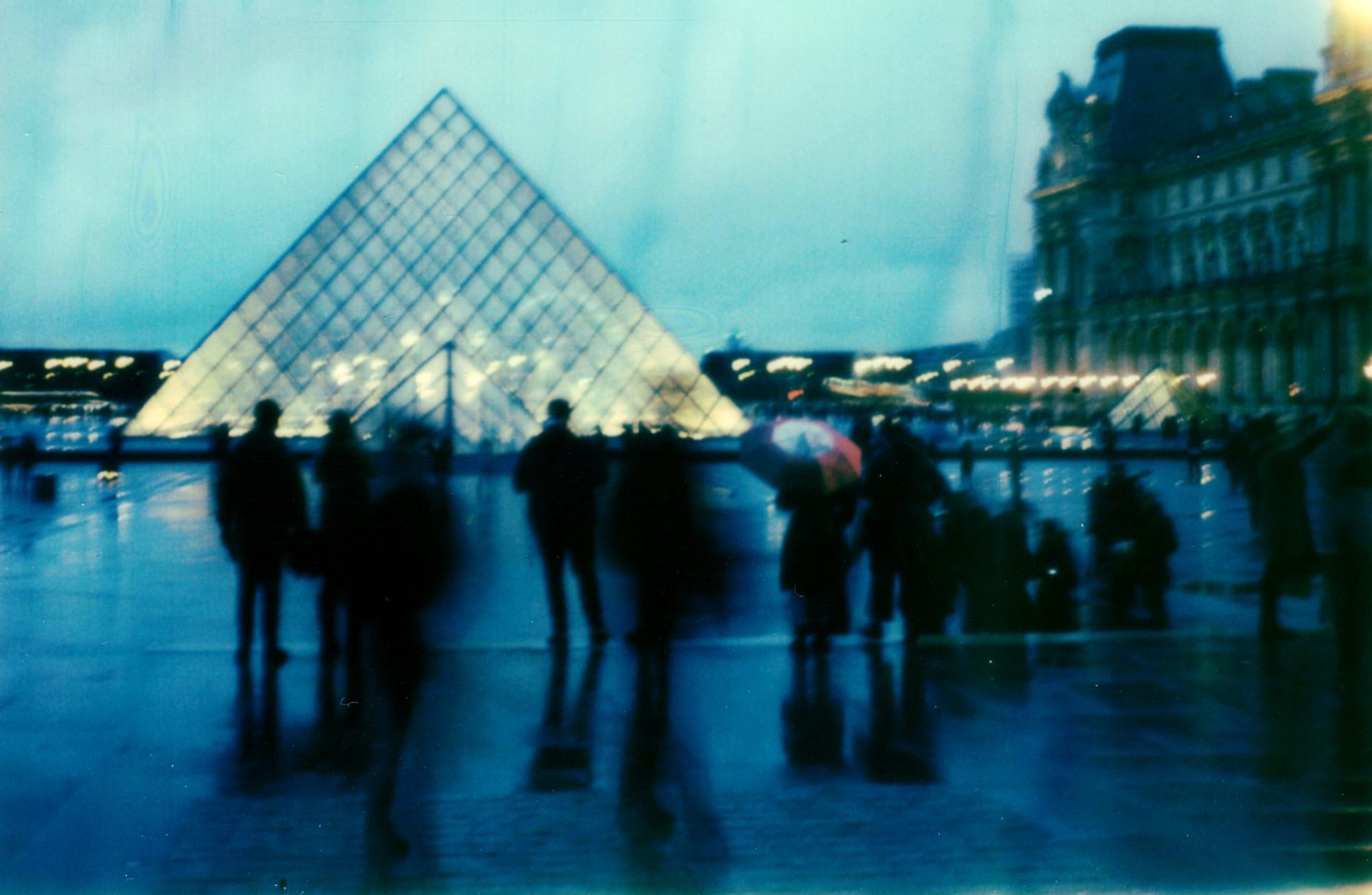Back in March this year me, my girlfriend and some other cinema-loving friends filmed a teaser trailer for the new theatre show produced by the amateur company iBirbanti – company founded by some high school friends and in which I also help as a technician. This is the second year since attending the Civica ‘Luchino Visconti’ cinema school in 2016 during which we have the chance to write, produce and shoot a short movie. Satisfied with our previous results, we attempted an even bigger challenge: making two different trailers, with different tones and styles, in order to fit them into the promotion campaign. Giuditta and I were in charge of the first one, and I decided to test out during the shootings both my vintage Polaroid instant cameras (i.e. Spectra Full-Switch and SLR680) for some backstage candids.

Being the first of these trailer shot inside doors – with huge ARRI 1000W tungsten lights all around – I went for the wider Spectra format. We had the shooting all planned in detail, also thanks to Giuditta’s storyboard: she would directed it, while I would help on a production level and friends would be in charge with cinematography and audio recording – which usually is a pain-in-the-a**, as none of us really is an expert in that field. Few more people were on set to help, plus two actors. I had a total of seven people to take pictures of – plus me. What I noticed is that the Polaroid Spectra flash is so bright that in such a dim lit location farther backgrounds would disappear, giving the same feel of harsh contrast between the brightness of what we filmed and the darkness of everything else that surrounded us on the set.

I prepared a rather tight working schedule for the whole day of shooting , with some extra time – usually 15min – for problem solving and quick breaks before every light set-up change. During such moments I would also go around and shoot pictures of people, and then we would go back filming the scenes. Fun and fatigue filled our bodies, as we worked restlessly since 7 in the morning to 5 in the afternoon, and the results already thrilled us: we all consider ourselves still deep down in the learning curve, but having different expertises and interests stimulated us to learn from others and share one’s tips & tricks – and in the end we were convinced by the takes we nailed as they were planned.
One month later the theatre show was presented to the public, and the trailer was screened for the first time. Other than me, Giuditta, the cinematographer – respectively as post-production editor, director and color-correction editor – and the theatre company director, no one else had yet watched the trailer. The people attending the venue welcomed our gloomy and mistery-filled trailer of the upcoming new musical comedy well, as we managed to convey (at least a bit) the deeper facets of the main character hidden behind a bright and funny show meant to delight the viewers.

Just one week after that, we went to Rimini – a seaside town where the story is set and the opening night of the show would have taken place – to shoot the second and more classical trailer. A smaller troupe was required for this shooting, and Giuditta and I only helped as assistants, while the friend in charge of audio recording in the previous shooting was here in charge of direction. There were more actors around, though – and a bright sun to shine in the pictures I took with the Polaroid SLR680, a camera that hardly ever misses the shot – making me rely on its esposure meter as I would with any professional camera. It also was only my second chance shooting instant pictures in full daylight – after the ones I took with the Impossible I-1 in Japan – and the richness of the black shadows is far from the bad reputation of washed-out images Polaroid Originals detractors profess.

I went back to the sturdier Spectra for the pictures during the opening show: results again where full of character – and most importantly reflect the emotions of the moment of when the picture was taken. Being a major analogue supporter, I enjoy the tactile results of picture-taking (i.e. instant pictures, silver prints from the darkroom) as much as the visual results of the photograph itself – yet I am aware of the fact that, even though such a difference in physicality compared to digital photography exists, it also has no impact at all on the results. It is just a matter of feeling and emotions, in the end – and having a chemical-resulting image in my hands is what helps me remember what was felt and captured in an brief instant of my life. That can be said of any medium, and anyone’s choice is good – if self-conscious.


